Abstract
In Experiment 1, 4 rats earned their daily food ration by choosing on a trials basis between a "risky" and a "riskless" lever. The risky lever produced either 15 45-mg food pellets or no pellets, and on average provided five pellets per choice. The riskless lever always produced three pellets. Across conditions, the number of trials per session was varied. Body weight and choice of the risky lever decreased as the number of trials per session decreased, even though body weight could only be defended by increased choice of the risky lever. In Experiment 2, trials per session were fixed, but the number of pellets delivered by the risky and riskless levers was either at the same level as in Experiment 1 or tripled from those levels. Now choice of the risky lever was inversely related to the size of reinforcement and to body weight. The results of these experiments show that risk aversion covaries with the amount of food available in a session and the daily variance in the amount of food earned.
Full text
PDF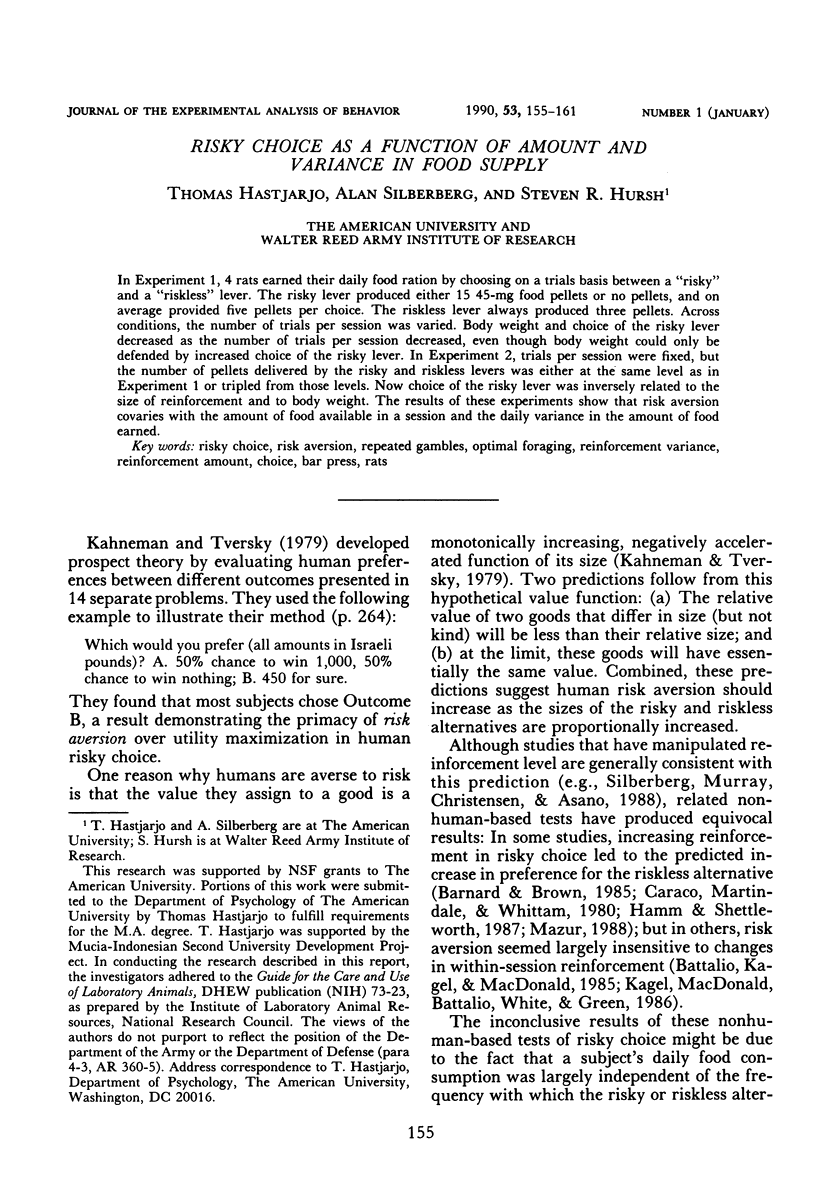
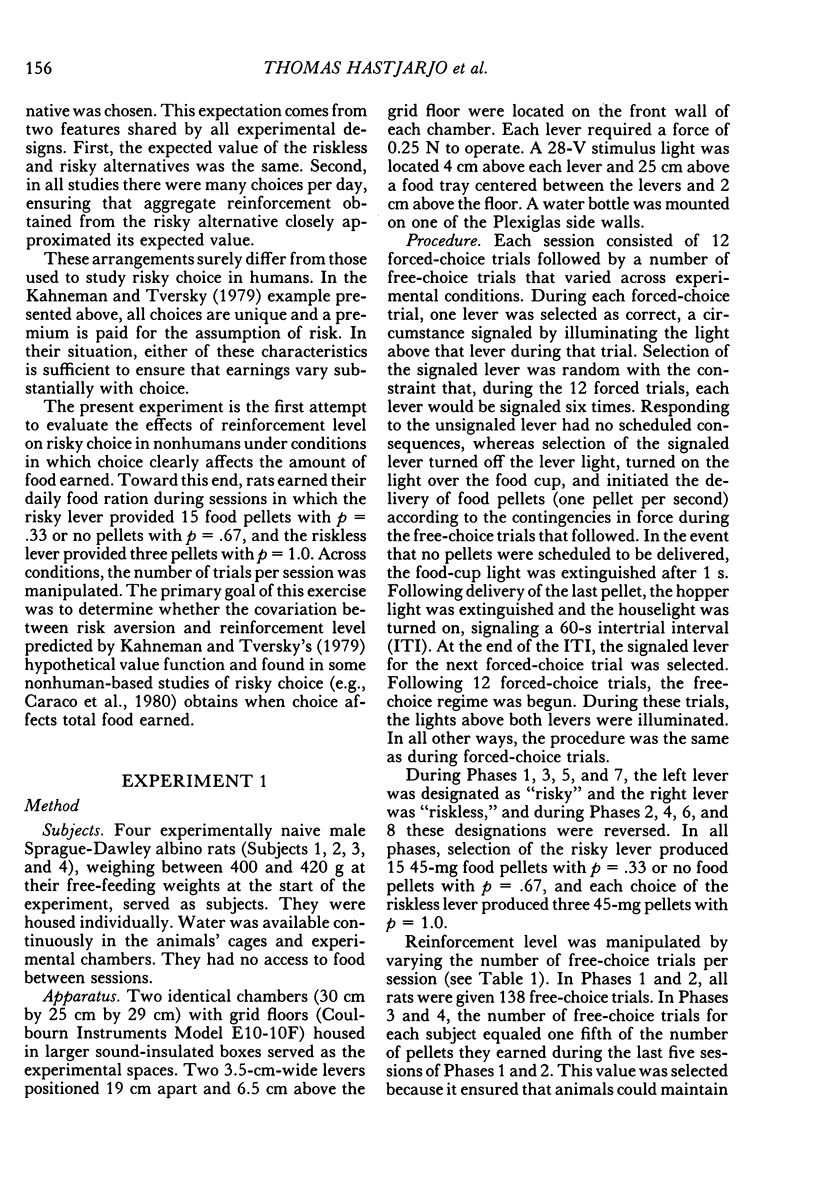
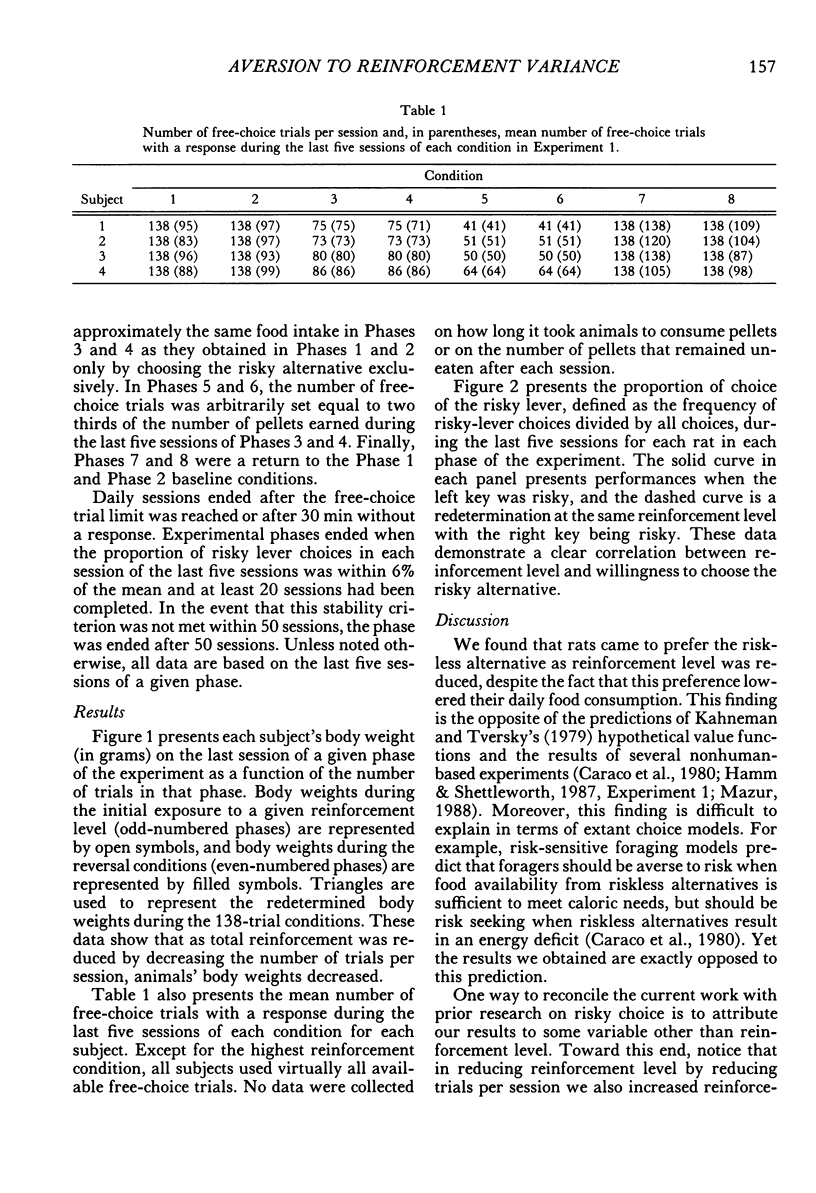
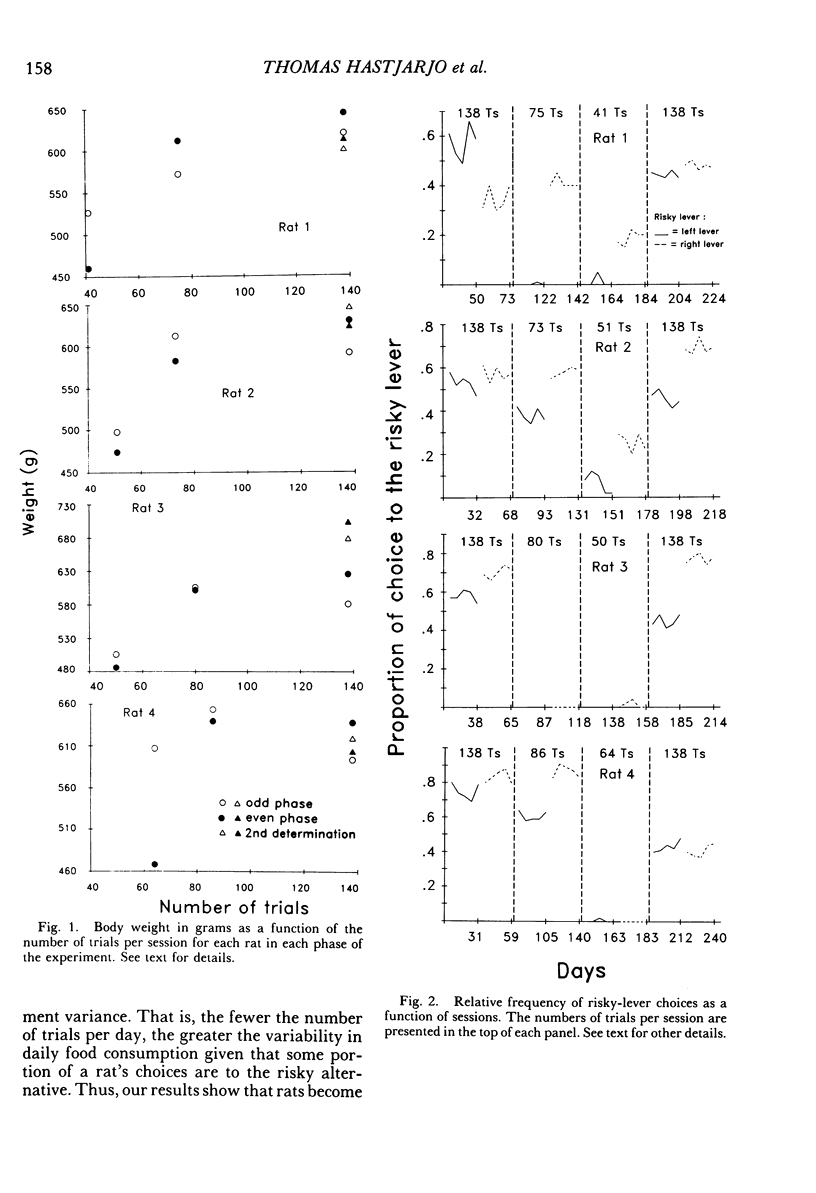
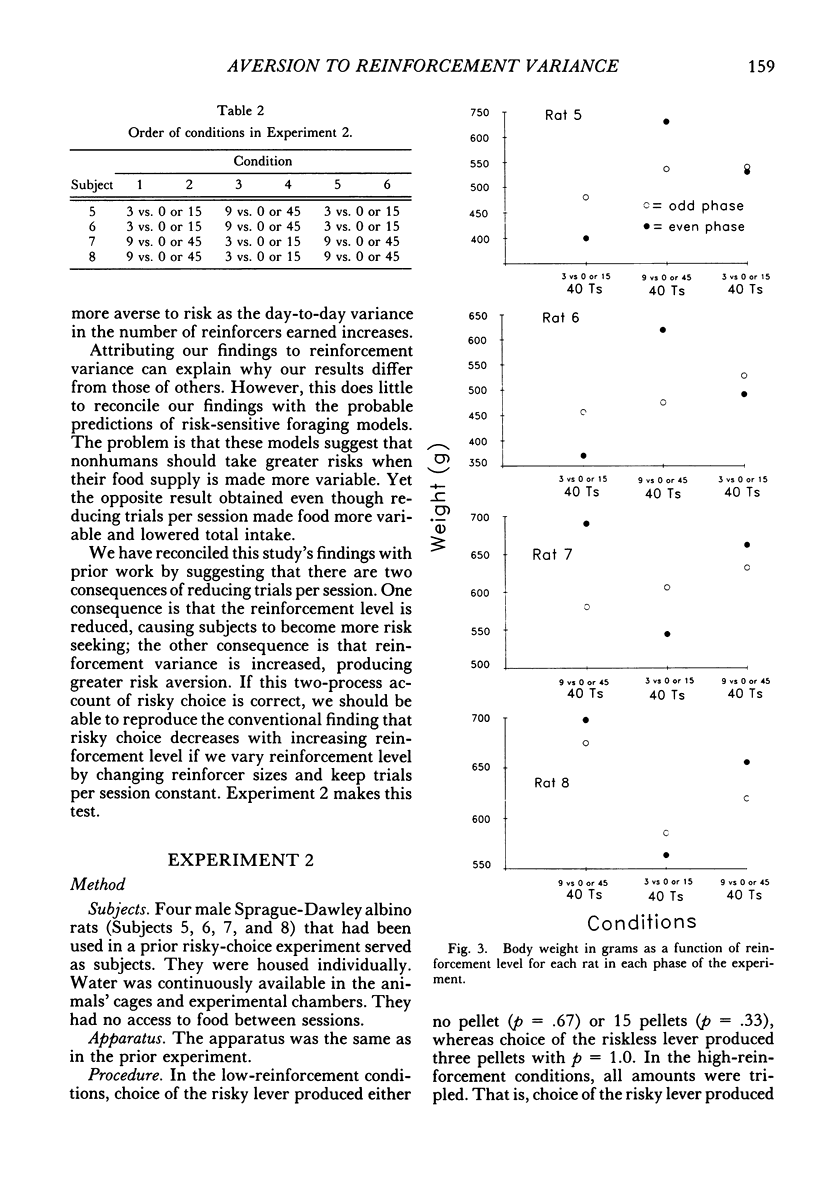
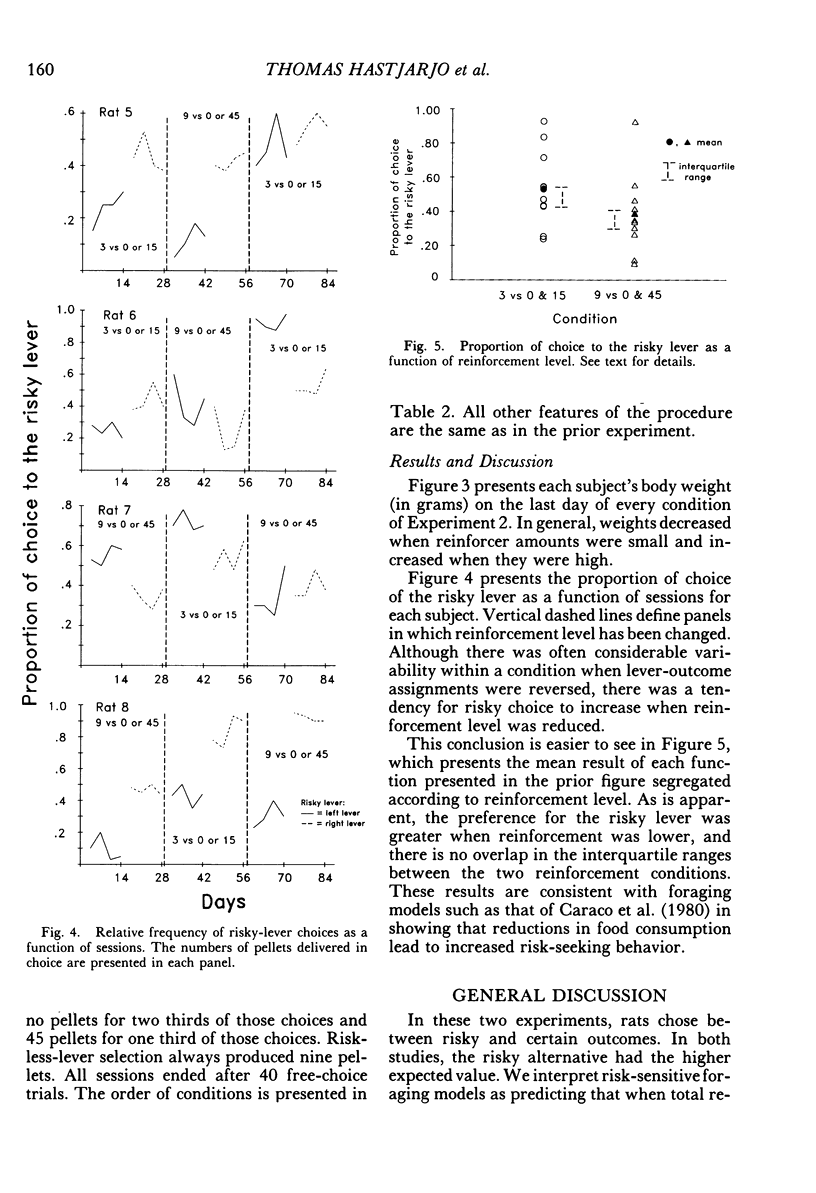
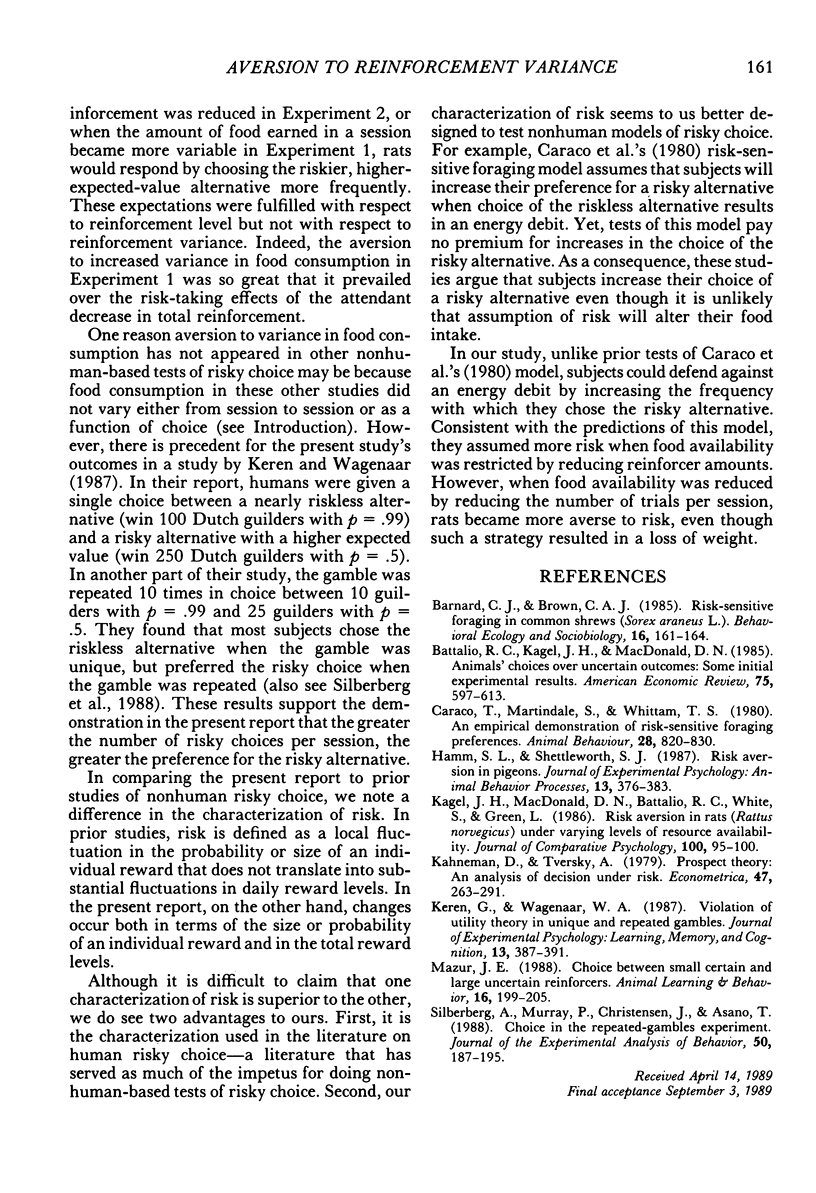
Selected References
These references are in PubMed. This may not be the complete list of references from this article.
- Silberberg A., Murray P., Christensen J., Asano T. Choice in the repeated-gambles experiment. J Exp Anal Behav. 1988 Sep;50(2):187–195. doi: 10.1901/jeab.1988.50-187. [DOI] [PMC free article] [PubMed] [Google Scholar]


